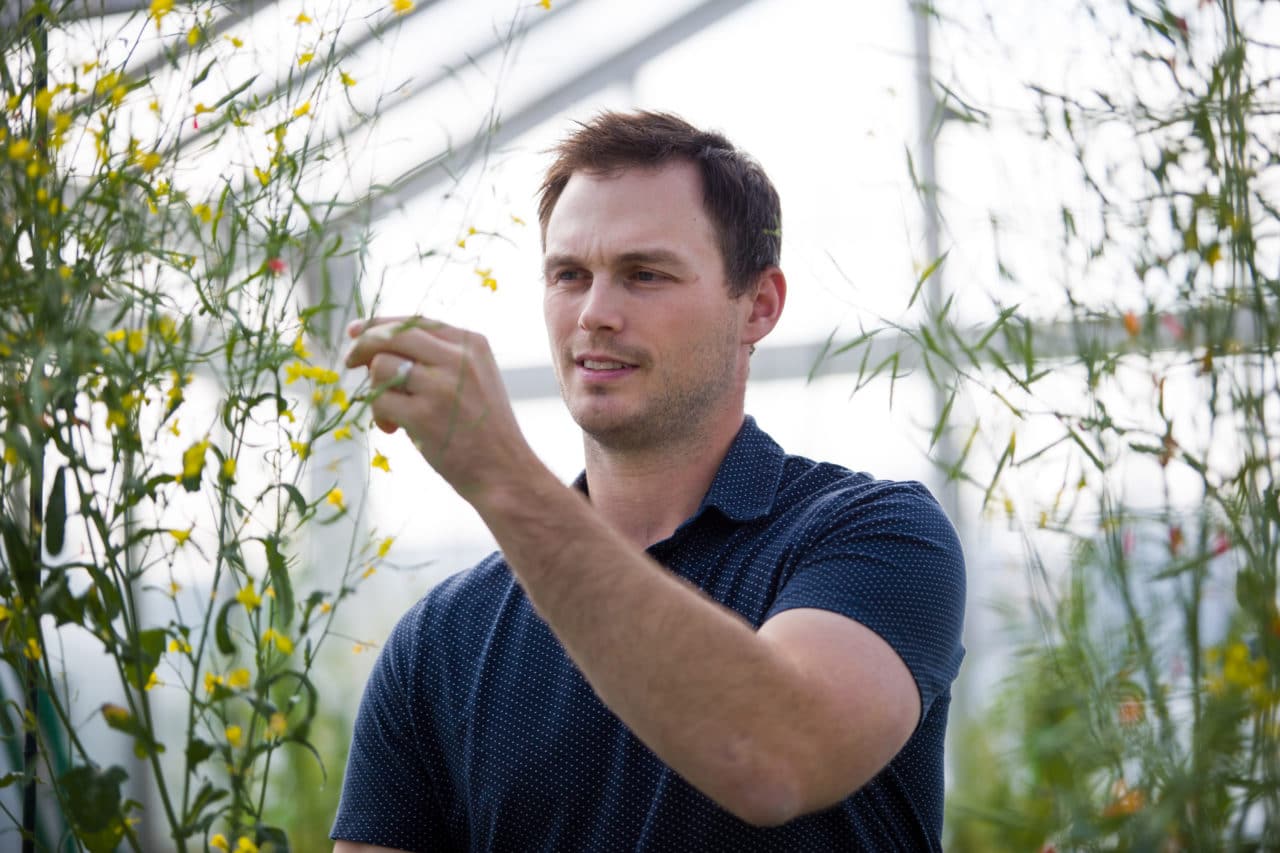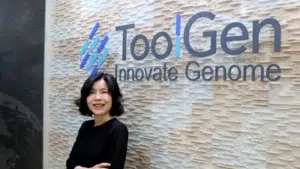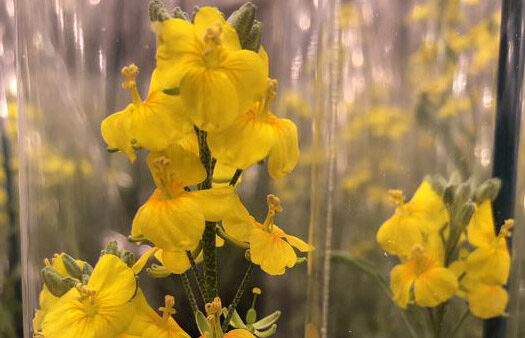Legal wrangling is complicating life for those who want to use the technology to develop commercial products.
Logan Skori wants to use CRISPR technology to launch his business, Calgary’s AgGene, to new heights. But until it’s clearer who exactly owns the rights to the technology, he’s being very careful.
Right now, AgGene is gearing up to initiate a financing round, and a significant part of that involves securing the licensing rights for a gene editing system that suits its needs. Engaging in negotiations is a substantial aspect of this process, Skori says. Terms, limitations, and restrictions are all on the table and subject to discussion when dealing with other companies.
“Navigating the legal landscape is a crucial part of our strategy. We’re not just focusing on the immediate deal; we’re also considering the long-term implications, anticipating potential interferences or disputes down the road. It’s a complex task and resolving conflicts of this nature often takes a considerable amount of time,” Skori adds.
Waiting on clarification of CRISPR-Cas9’s patent status isn’t part of AgGene’s plan, Skori says.
“Unfortunately, we can’t afford to wait idly by for these issues to settle, as doing so would risk falling behind in this dynamic environment. So, we’re actively moving forward, recognizing the need to make strategic decisions without letting unresolved matters hinder our progress.”
At issue is the fact that the patent landscape for CRISPR-Cas9 is likely to remain complicated and dynamic for years to come, as more patent applications are examined, granted, opposed or revoked in different jurisdictions. The outcome of these patent disputes could have a major impact on the innovation and commercialization of CRISPR-Cas9, as well as on the public interest and social responsibility of using this powerful technology.
CRISPR-Cas9 is a revolutionary gene-editing technology that allows researchers to cut and modify DNA sequences in living cells. It has the potential to transform medicine, agriculture, biotechnology and many other fields.
However, the ownership and licensing of this technology is also a source of legal disputes and controversies among various parties. Anyone who thought gene editing would level the playing field and open a world of new breeding possibilities free from the high costs of working in the GM space might want to think again, thanks to the complicated world of gene editing patents.

The Race is On
The patent race for CRISPR-Cas9 began in 2012, when many research groups filed their patent applications for the technology. One group, led by Jennifer Doudna at the University of California, Berkeley (UC Berkeley) and Emmanuelle Charpentier, then at Umeå University in Sweden, published a paper describing how the bacteria CRISPR-Cas9 immune system works.
Subsequently, in early 2013, several groups, including the UC Berkeley crew and the Broad Institute of MIT and Harvard (the Broad Institute), published papers demonstrating the use of CRISPR-Cas9 in human and animal cells. Both groups sought to patent the technology in various countries.
Since then, legal battles have ensued over the intellectual property (IP) rights of CRISPR-Cas9, especially in the United States, where the two groups have been involved in a series of patent interference proceedings before the U.S. Patent and Trademark Office (USPTO). The main issue now is who is the first inventor.
So far, the USPTO has ruled in favor of the Broad Institute. However, the UC Berkeley group has appealed the decisions, and the litigation is still ongoing.
Another player, South Korea’s ToolGen, has also entered the space, complicating things even more.
The patent situation for CRISPR-Cas9 is also complex and uncertain in other countries outside the United States, where different patent offices have reached different conclusions about the validity and scope of the patents. For example, in Europe, the European Patent Office (EPO) has granted patents to those three but has also revoked some of them due to opposition from one another, some unanimously.
In China and Japan, the patent offices have granted patents to all three but have also rejected some of them due to lack of novelty and/or inventive step.
In Canada, the patent landscape for CRISPR-Cas9 is still developing, as most of the patent applications are still pending examination by the Canadian Intellectual Property Office (CIPO). However, in July 2021, CIPO granted the first Canadian patent for CRISPR-Cas9 to the Broad Institute and in 2022, to the UC Berkeley group and the Broad Institute. ToolGen’s has been also allowed as of 2023.
The Canadian patent of the UC Berkeley group is licensed to ERS Genomics, a company founded by Charpentier to commercialize the technology. According to ERS Genomics, this patent is the first of many that it expects to be granted in Canada, covering various aspects of CRISPR-Cas9.
“Although it took some time to obtain this first Canadian patent, it is one of the most comprehensive and inclusive patents in the ERS portfolio to date. Canada has an impressive history in the life science arena, and we foresee CRISPR playing an important role in the future of Canadian biotech,” said the company’s VP of Intellectual Property and Corporate Development Michael Arciero in a statement.
The granting of this patent could have significant implications for the Canadian biotechnology sector, as it could affect the access and affordability of CRISPR-Cas9 for research and development purposes. Depending on the terms and conditions of the license agreements, Canadian researchers and companies may have to pay royalties or fees to use the technology or may face legal challenges if they infringe the patent.
Alternatively, they may seek to use other gene-editing technologies that are not covered by the patent, or to challenge the validity or scope of the patent in court.

Navigating the CRISPR Patent Mine Field
Business owners like Skori who are currently shopping around for what gene editing platform to use find themselves navigating a complicated landscape and trying to decide which direction to take. To obtain a CRISPR patent, the innovation must meet certain criteria: it has to be novel, unique, and serve a specific function, he notes. The challenge arises in the fact that the gene editing platform, despite being a physical entity, exists on a microscopic scale, making it difficult to conceptualize, he explains.
“Essentially, what makes it complicated is that it’s a tangible thing, yet it operates at a level that’s hard to grasp. At its core, a gene editing platform is delivered as a set of instructions. While it is a physical entity you’re paying for, the process involves receiving the genetic sequence and then incorporating it into the plant,” he says.
“Once activated, it physically generates the gene editing system. So, in a way, you’re acquiring a tangible product, but the means of obtaining it involves receiving and executing instructions within the plant.”
Different tools offer varying functionalities, and companies must evaluate their intentions when choosing a system, he says.
“Cost considerations are significant and vary based on the size of the company. Efficiency is crucial too, because saving money might be counterproductive if the chosen system is not efficient, ultimately resulting in wasted time and additional costs,” he adds.













